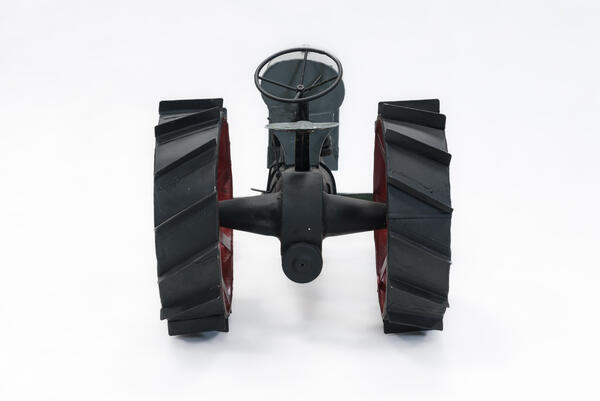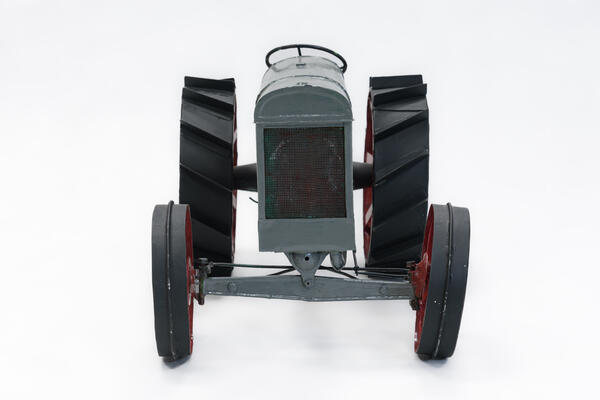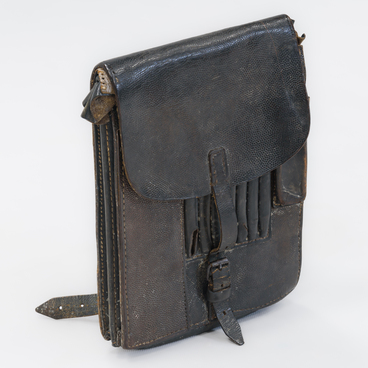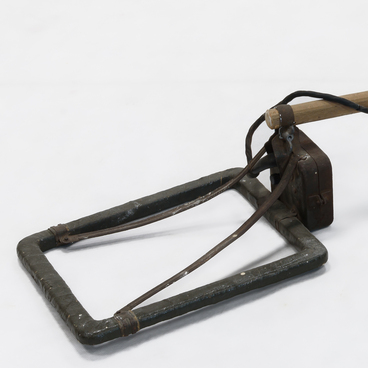The most common tractor that was in use in the Soviet agricultural industry was the Fordson-Putilovets. In Russia at the beginning of the 20th century, manual labor and horse-drawn equipment were mainly used for cultivating plants and livestock. After the end of the First World War, agriculture deteriorated considerably — millions of peasants did not return home.
The first experimental tractors appeared in the early 1920s, but they were not ready for mass production. Only in 1924, serial production of tractors was started at the largest machine-building enterprise — the Red Putilovite Plant (“Krasny Putilovets”). Presently, it is the Kirov Plant in St. Petersburg. To improve its procedures, the plant adopted the best practices of foreign tractor enterprises. The plant operated under license from Henry Ford and chose to copy the Fordson-F model.
The Fordson had great operational qualities and was not very expensive, that is why it gained such popularity all over the world as a piece of agricultural equipment. The tractor could not only plow, but also sow, cultivate and harvest crops; it was fitted with a thresher for grain, a mechanical saw and an electric generator. It did not weigh much and had a fuel-efficient engine, so the work was performed with maximum productivity.
The Fordson tractors that were purchased by the Red Putilovite Plant were needed to prepare design and technological documentation in order to establish the production of tractors without resorting to the help of American engineers. Production was started in the Putilovite workshop, where artillery pieces were assembled. Since the plant did not have the right equipment, personnel and specialists for the production of tractors, it took some time to prepare everything. In just a year, the plant’s specialists and workers got the hang of the entire technological process on their own. In 1924, a dozen of such tractors was released. In total, in the period from 1924 to 1933, about 36,000 Fordson-Putilovets tractors came off the assembly line.
The American version of the Fordson and the domestic Putilovets jointly were successfully tested at the Timiryazevskaya test station. The tests were led by a specialist in agricultural machinery Goryachkin. As a result, the tests identified some flaws and defects that were later addressed and minimized.
The Fordson-Putilovets became the most popular tractor in the agricultural sector of Russia.
The first experimental tractors appeared in the early 1920s, but they were not ready for mass production. Only in 1924, serial production of tractors was started at the largest machine-building enterprise — the Red Putilovite Plant (“Krasny Putilovets”). Presently, it is the Kirov Plant in St. Petersburg. To improve its procedures, the plant adopted the best practices of foreign tractor enterprises. The plant operated under license from Henry Ford and chose to copy the Fordson-F model.
The Fordson had great operational qualities and was not very expensive, that is why it gained such popularity all over the world as a piece of agricultural equipment. The tractor could not only plow, but also sow, cultivate and harvest crops; it was fitted with a thresher for grain, a mechanical saw and an electric generator. It did not weigh much and had a fuel-efficient engine, so the work was performed with maximum productivity.
The Fordson tractors that were purchased by the Red Putilovite Plant were needed to prepare design and technological documentation in order to establish the production of tractors without resorting to the help of American engineers. Production was started in the Putilovite workshop, where artillery pieces were assembled. Since the plant did not have the right equipment, personnel and specialists for the production of tractors, it took some time to prepare everything. In just a year, the plant’s specialists and workers got the hang of the entire technological process on their own. In 1924, a dozen of such tractors was released. In total, in the period from 1924 to 1933, about 36,000 Fordson-Putilovets tractors came off the assembly line.
The American version of the Fordson and the domestic Putilovets jointly were successfully tested at the Timiryazevskaya test station. The tests were led by a specialist in agricultural machinery Goryachkin. As a result, the tests identified some flaws and defects that were later addressed and minimized.
The Fordson-Putilovets became the most popular tractor in the agricultural sector of Russia.






